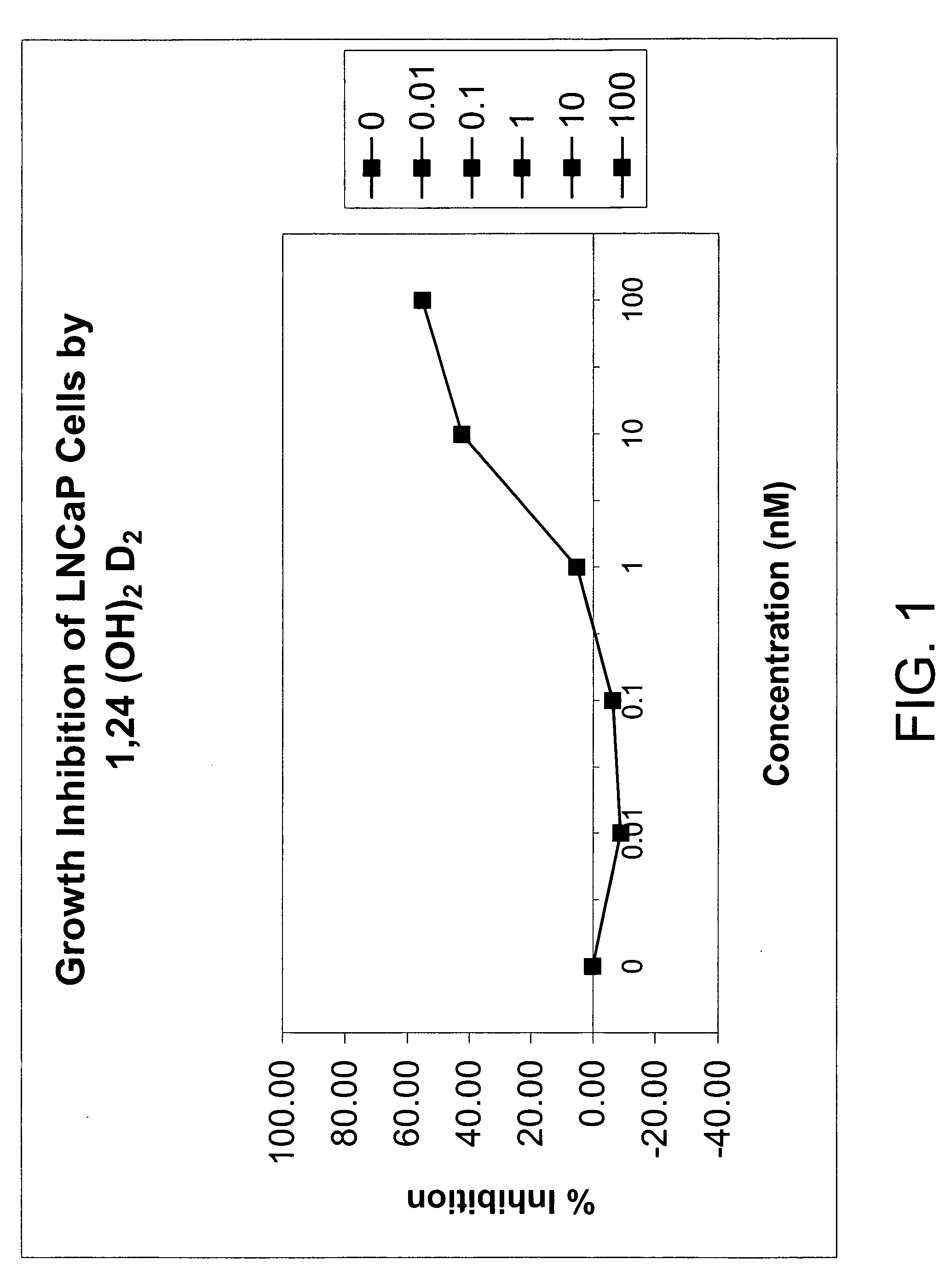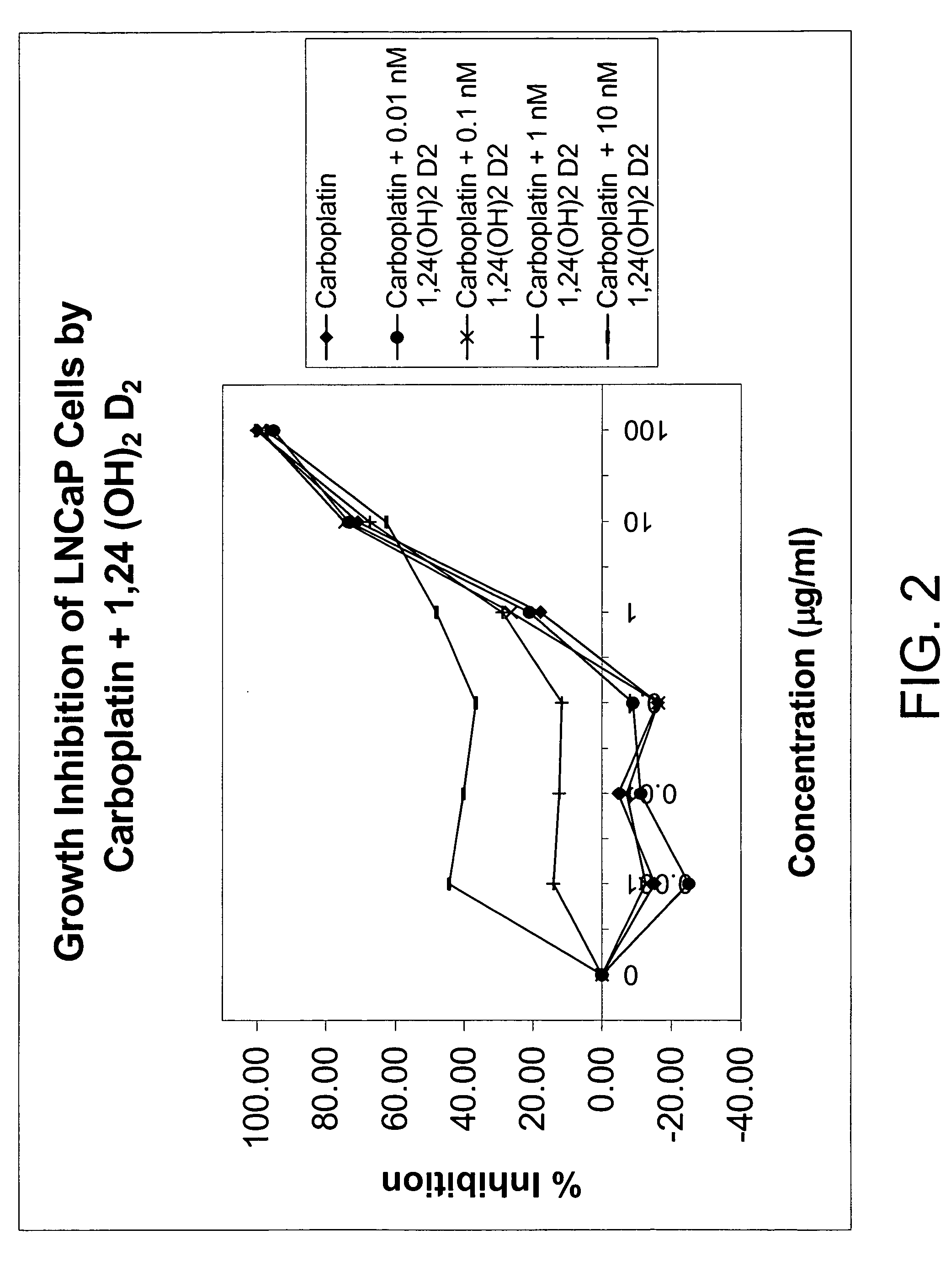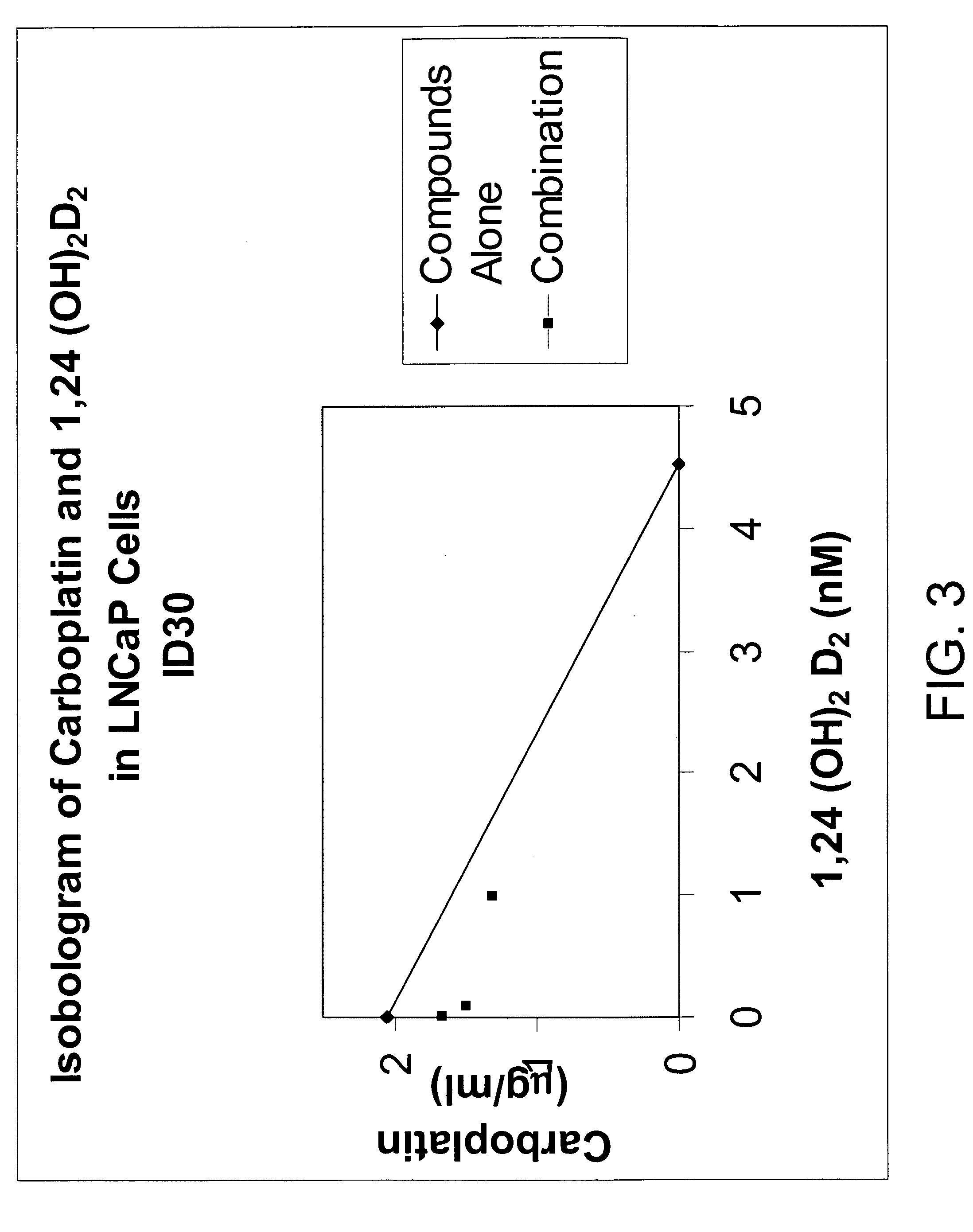Method of treating prostatic diseases using a combination of vitamin D analogues and other agents
a prostatic disease and vitamin d analogue technology, applied in the field of treating prostatic diseases using a combination of vitamin d analogues and other agents, can solve the problems of low testosterone to castration levels, poor cardiovascular profile of diethylstilbestrol, and debatable impact of aggressive approaches on overall survival, so as to reduce the incidence or risk of esophagitis, bypass the increase in calcemic activity, and improve compliance and safety
- Summary
- Abstract
- Description
- Claims
- Application Information
AI Technical Summary
Benefits of technology
Problems solved by technology
Method used
Image
Examples
example 1
1α,24-dihydroxyvitamin D2 [1α,24-(OH)2D2]
[0097] The affinity of 1α,24-(OH)2D2 for the mammalian vitamin D receptor (VDR) was assessed using a commercially available kit of bovine thymus VDR and standard 1,25-(OH)2D3 solutions from Incstar (Stillwater, Minn.). The half-maximal binding of chemically synthesized 1α,24-(OH)2D2 was approximately 150 pg / ml whereas that of 1α,25-(OH)2D3 was 80 pg / ml. Thus, the 1α,24-(OH)2D2 had a very similar affinity for bovine thymus VDR as did 1α,25-(OH)2D3, indicating that 1α,24-(OH)2D2 has potent biological activity.
example 2
1α,24-dihydroxyvitamin D2 [1α,24-(OH)2D2]
[0098] VDR binding of vitamin D compounds by prostate cells is demonstrated using the techniques of Skowronski et al., 136 Endocrinology (1995) 20-26, which is incorporated herein by reference. Prostate-derived cell lines are cultured to near confluence, washed and harvested by scraping. Cells are washed by centrifugation, and the cell pellet resuspended in a buffered salt solution containing protease inhibitors. The cells are disrupted by sonication while cooling on ice. The supernatant obtained from centrifuging the disrupted cells at 207,000×g for 35 min at 4° C. is assayed for binding. 200 μL of soluble extract, (1-2 mg protein / ml supernatant) is incubated with a 1 nM 3H-1α,25-(OH)2D3 and increasing concentrations of 1α,24-(OH)2-D2 (0.01-100 nM) for 16-20 hr at 4° C. Bound and free hormones are separated with hydroxylapatite using standard procedures. Specific binding is calculated by subtracting nonspecific binding obtained in the presen...
example 3
1α,24(S)-dihydroxyvitamin D2 and 1α,24(R)-dihydroxy-vitamin D2 [1α,24(S)—(OH)2D2 and 1α,24(R)—(OH)2D2]
[0099] Using the plasmids pSG5-hVDR1 / 3, a vitamin D receptor (VDR)-expressing plasmid, and p(CT4)4TKGH, a plasmid containing a Growth Hormone (GH) gene, under the control of a vitamin D-responsive element (VDRE), experiments were conducted to explore the ability of 1α,24-(OH)2D2 to induce vitamin D-dependent growth hormone acting as a reporter gene compared to that of 1α,25-(OH)2D3. Cells in culture were co-transfected into Green monkey kidney, COS-1 cells with these two plasmids. One plasmid contained the gene for Growth Hormone (GH) under the control of the vitamin D responsive element (VDRE) and the other plasmid contained the structural gene for the vitamin D receptor (VDR). These transfected cultures were incubated with 1α,24-(OH)2D2 or 1α,25-(OH)2D3, and the production of growth hormone was measured.
[0100] As shown in Table 2, both 1α,24(S)—(OH)2D2 and its epimer, 1α,24(R)—(O...
PUM
| Property | Measurement | Unit |
|---|---|---|
| Mass | aaaaa | aaaaa |
| Mass | aaaaa | aaaaa |
| Composition | aaaaa | aaaaa |
Abstract
Description
Claims
Application Information
 Login to View More
Login to View More - R&D
- Intellectual Property
- Life Sciences
- Materials
- Tech Scout
- Unparalleled Data Quality
- Higher Quality Content
- 60% Fewer Hallucinations
Browse by: Latest US Patents, China's latest patents, Technical Efficacy Thesaurus, Application Domain, Technology Topic, Popular Technical Reports.
© 2025 PatSnap. All rights reserved.Legal|Privacy policy|Modern Slavery Act Transparency Statement|Sitemap|About US| Contact US: help@patsnap.com



